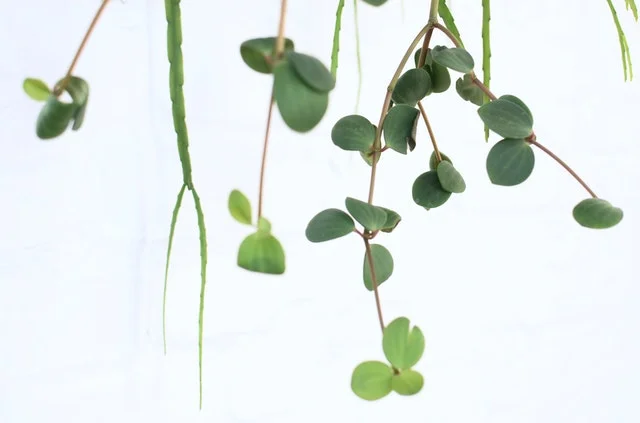Table of Contents
How to Care for String of Turtles
String of turtles are succulent plants that are native to Brazil. They can make ideal house plants as they can adapt to indoor conditions.
These plants tend to grow slowly and remain a small size, which makes them a great option for households that have limited space.
This plant will only grow to about twelve inches in height. String of turtles got its name due to its leaves which look like a string of miniature turtles.
What Does Your String of Turtle require?
Light Requirements
String of turtles are plants that prefer bright light, but they should not be put in direct sunlight. Avoid putting these plants in direct sunlight as it can damage the leaves of the plant.
Temperature Requirements
String of turtles tend to prefer temperatures between fifteen and twenty-six degrees centigrade. These plants can be kept at average room temperatures.
String of turtle plants need to be grown indoor or in a greenhouse all year round.
These plants should not be exposed to a temperature that is less than fifteen degrees centigrade as cold temperatures can cause damage including blackened foliage and stunted growth.
Soil Requirements
It is best to use an organic mix for string of turtles. Avoid using premixed soils that have been specially formulated for succulent plants.
A soil that is rich in peat is best for these plants as it is highly acidic but ensure that the pH level doesn’t get too low.
Humidity Requirements
String of turtles tend to prefer moderate levels of humidity and can be satisfied with an average room level of humidity.
During the summer months it is a good idea to use a humidifier or a misting spray but take care not to allow the leaves to become too wet.
How to Water String of Turtles
Peaty soils will allow the water to drain whilst retaining the soils. These plants tend to suffer from overwatering.
String of turtles thrive in moist conditions. During the growing season keep the soil moist and during the winter months only water the plant when the soil is dry.
Drench the soil so that the water flows to the bottom of the pot so that the soil is moist, but make sure the plant doesn’t become overwatered.
When the top layer of soil is dry then the plant needs to be watered. Take care to ensure that the plant is kept moist during the winter months when the plant is dormant.
How to Fertilise String of Turtles
Fertiliser should be fed to the string of turtles as this will enable them to develop a bright shiny vigour and the leaves will develop a vibrant pattern and colour.
These plants should be able to retain the vibrant colour during the growing season.
It is best to feed these plants with a houseplant fertilizer that has been diluted. The plants should be fed every two weeks during the growing season.
It is recommended that fertilizer is not given to the plant during autumn and winter.
Extra Tips for String of Turtles
Pests & Diseases
There are several different problems that can affect string of turtles and these include blackfly, aphids and mealybugs.
Root mealybugs will hide on the underneath of the leaves and in small hollows. Other common problems that can affect these plants is southern blight and root rot.
Root Rot
A common problem for String of turtles is root rot and this can happen in plants that are left to sit in dark environment with a prolonged level of moisture in the soil.
Stunted growth, rapidly wilting leaves and a rotten base that is brown in colour are signs of this common problem.
If you notice these signs, then remove the plant from the pot and check its health below the compost line. If the roots of the plant have a yellow tinge, then that is good, but it is not a good sign if they are brown and mushy.
Excess Moisture on the Leaves
An excessive amount of moisture in the plant can cause a problem and this will be shown as a lack of leaves on top of the soil. It is best to water the plants from the top, however for messy waterers it might be best to consider the bottom-up method.
If the plant has a bare head increase the amount of air circulating and the amount of light that the plant has.
Always remove rotten debris or yellow leaves from the soil as it could attract fungus and bacterial diseases which will increase the decline of the plant.
Pruning
String of turtle plants need to be pruned on a regular basis or they will develop an unkempt, leggy, and ragged appearance. Occasional pruning will enable the damaged and dead leaves and stems to be removed from the plant.
Pruning these plants will also encourage new development and growth. Pruning should be carried out using sharp shears or scissors that have been sanitized. Avoid cutting through yellow tissue on this plant as this can cause damage such as fungal diseases.
Propagation
Propagation of string of turtles can be achieved in a couple of ways by using a stem placed in soil or a stem placed in water.
Propagation from a stem cutting in soil
String of turtle plants can be propagated from a cutting planted in soil. It is best to do this propagation during the spring and summer months.
- Cut the stems so that they are about six inches in length.
- Place the stem in a pot of damp soil. Ensure that the back of the leaves are down on the soil. Avoid burying the cutting in the soil. Adding a bit of root hormone powder will help the nodes.
- Use saran wrap to cover the top of the planter and pierce it with holes so that air is able to circulate.
- Once a week remove the saran wrap so that the plant air can escape. Spray the plant with a mist of fresh water when the soil is dry.
- Periodically check the propagation to see how its developing. Adjust the circulation of air and water when required. The plant will start to form roots after a couple of weeks.
Propagation from stem cutting in water.
- Cut the stem at about six inches in length.
- Remove the leaves from the lower half of the plant, however, be careful as you can easily break the stem.
- Place the stripped end of the stem into the water. Monitor the growth of the stem. Change the water as required.
- Once strong roots have started to develop it can be moved to fresh soil. The plant should be kept moist for a couple of weeks until the water roots have developed into soil roots.
Repotting String of Turtles
String of turtles plants are best repotted every couple of years. It is best to use a potted mix when the plants are being repotted. Every time that the plant is repotted move it into the next size of pot.
Avoid using a pot that is too big as this can cause problems for the roots. Hydrate the plant twenty fours before moving it from one pot to another.
FAQ
String of Turtles Toxicity
The String of Turtles is not a toxic plant when ingested by pets. These plants are best avoided by households that have pets or keep the plants out of the reach of pets.
Is String of Turtles a Succulent?
String of turtles is part of the succulent family and this can be seen in the little chubby leaves that are on the plant.
How Much Light Do String of Turtles need?
String of turtles tend to thrive in bright but indirect sunlight. Do not place these plants in direct sunlight for many hours as this can damage the leaves.
These plants can be placed in sunlight for a couple of hours in the morning. They can also grow well under fluorescent and artificial lights.
Is String of Turtles Rare?
String of turtles is a type of variegated plant that untill recently has been rare, however these plants are becoming easier to find.
The main features of these plants are the rate of growth, their size and their level of toxicity.
What Are the Signs of Overwatering in a String of Turtle?
There are several signs that the plants will display when they are getting overwatered. These signs include yellowing and fading leaves.
When the leaves start to show these signs, it is still possible to save the plant by drying out the soil and trimming off the leaves that have been affected.
When the plant starts to drop leaves due to overwatering and when the leaves become mushy and soft then unfortunately root rot has set in.
How to Fix Root Rot in String of Turtles
Root rot is a problem caused by overwatering and it’s a problem that can quickly kill a plant. If you do get a plant with root rot, then remove the plant from the soil and have a look at the roots.
Trim any brown, grey mushy or black roots away from the plant. Allow the roots to air and then repot in a new pot with fresh soil.
Photo by Skylar Kang from Pexels



